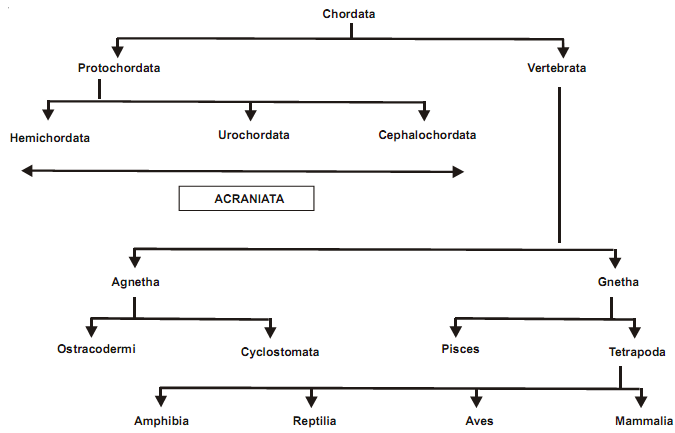Phylum Chordata-
Chordata name given by Balfour.
Herst put hemichordata into separate phylum. Lamarck gave the word tunicata & vertebrata.
Pisces classified by Romer. Amphibia classified by G.K. Noble.
There are 65,000 species of chordata.
Pisces is largest class, having 33,000 species. Amphibia is smallest class having 2500 species.
CHARACTERS OF CHORDATA -
1. Total animals are 3-5% of animal kingdom. Notochord or chorda dorsalis present in any stage of life cycle.
2. Gill slits present in any stage of life cycle. Nervous system is dorsal, single & hollow. Post anal tail present.
3. Mouth after first segment. Anus before last segment.
4. Liver is present. Heart is ventrally placed.
5. Flow of blood on dorsal side, anterior to posterior. Flow of blood on ventral side, posterior to anteriror.
6. R.B.C. present. Circulatory system closed. Alimentary canal is placed ventral to nerve cord.
7. Symmetry bilateral. Organ system grade. Triploblastic animals. True coelomate. Enterocoelic
8. Unisexual. Sexual reproduction present. Larvae generally absent.
9. Power of regeneration less. Cold blooded / warm blooded.
 10. Portal system present.
10. Portal system present.
 Chordata is divided into 2 parts -
Chordata is divided into 2 parts -
1. Protochordata 2. Vertebrata
|
S.No.
|
Character
|
Protochordata
|
Vertebrata
|
|
1
2
3
4
5
6
|
Notochord or chorda dorsalis
Habitat
Feeding
Evolution
Size
Endostyle
|
Present in original form
Marine
Cilliary
Early
Small
Present
|
Converted into vertebral column & cranium
All habitats
May be
Late
Large
Thyroid gland present
|